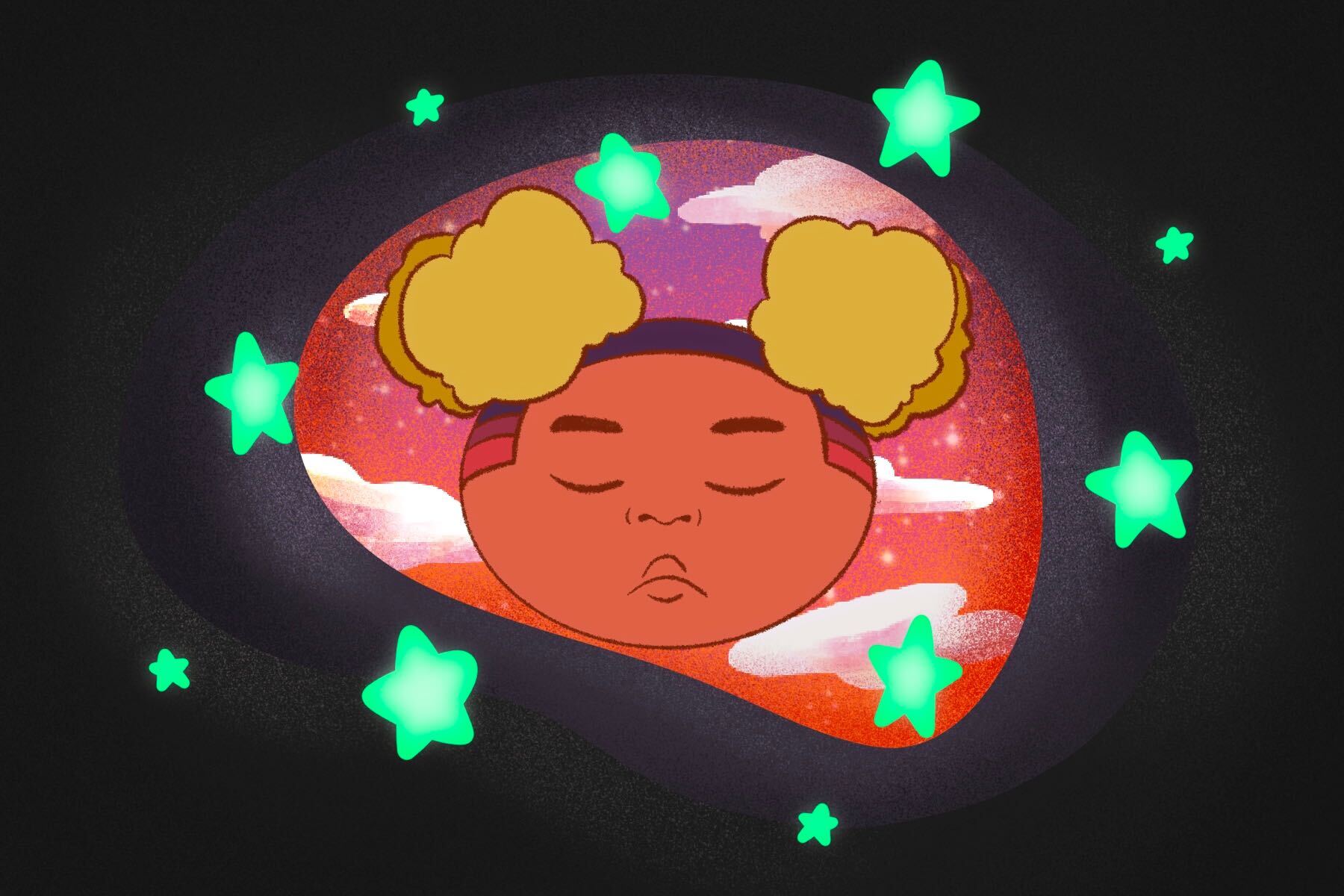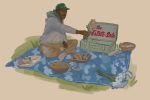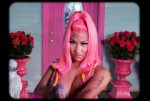“Yo, yo, yo, listening to Tobi Lou” a voice says as a shopping cart full of toys rolls down a street somewhere in Los Angeles. The words “Starring: Tobi Lou” flash across the screen, as his hands grip the handle of the shopping cart, where the words “Happy + extra sad” are engraved.
Roughly six minutes in its entirety, the EP and accompanying music video “LINGO STARR” basks in Chicago-based rapper Tobi Lou’s signature conceptualization of a semi-animated world that is entirely his. With three short songs that bleed into each other, “LINGO STARR” is driven by its visual components that pay homage to old movies, video games and cartoons from Lou’s childhood, positioning harsh realities alongside a softer imagination. While music commonly functions as a method of escapism, Lou’s unique style immerses itself in this notion completely
Lou’s relationship with music has always coincided with his love for cartoons. He has created a cartoon avatar of himself, complete with bright colored sneakers and hues of purple and green. Sometimes he puts stars under his eyes.
The cartoon version of Lou feels familiar, as fans may recognize it from the cover art of Lou’s last album, “Live on Ice,” which portrays his cartoon character cross legged in a melting ice cube, lost in thought. Something appears to be weighing on him.
This inclusion of art and symbolism is essential in maintaining the emotional movement Lou’s work is capable of, establishing a universe where the emotional purpose of his work relishes amongst his vivid imagination.
Sadness is not something Lou runs from; instead, it is something he accepts. In an interview with Complex, Lou spoke about the balance of sadness and happiness, particularly speaking about the joy he finds within the dismal yet inevitable aspects of being alive. This idea is apparent in Lou’s work; when I first began listening to him, it was an attribute of his style that I could not fully place. He wanders through dark concepts, emotions and experiences.
While these topics would usually feel limiting and traumatic, his presentation of these experiences repositions their heaviness in tandem with joy. Lou credits this inspiration to OutKast’s “Hey Ya!,” commenting on the way the song disguises a somber subject behind an energetic and seemingly happy instrumental.
“LINGO STARR” acts similarly, but with a different level of urgency. As the pandemic poses obvious limitations to the production of art across all mediums, the EP furthers Lou’s devotion to imagination amongst a challenge of reduced resources. Considering how Lou has described the emotions of both happy and sad as the “theme of his music,” the challenges caused by the pandemic speak to the capability art holds within healing.
Although each song is short, they transition into one another, as their titles flash upon the screen like movie titles. Lou uses melodic beat switches that both distinguish and blend each song into the other, further stimulating the cinematic nature of the EP overall. Iridescent butterfly wings appear behind Lou, bursting into flames before morphing into a dragon.
The video for “LINGO STARR” signals the way in which the project is meant to be experienced, as it visually uses each song as a vessel for the EP’s larger meaning. There is a careful flow between the three songs, creating one whole work of art, igniting an inspiration necessary in a world that is saturated with hardship. The connection to childhood found throughout the EP forms an element of nostalgia that somehow feels as carefree as it is heavy-hearted, continuing Lou’s creation of a world that anyone can escape to.
In a video made by visual artist and director Glaceface, Lou spoke about his relationship with anxiety and how it infiltrates his creative process. Struggles with anxiety and Lou’s world building seem to interact with each other symbiotically, as producing such vulnerable work can instigate an all-consuming sense of disquiet.
However, this does not hinder Lou from continuing to create, as he also acknowledges failure as a necessary part of being an artist. The video goes on to explore how an artist’s vulnerability brings their experiences into the lives of others. Lou explains that this is an aspect of sharing his music that he is incredibly moved by, appreciating that people seek visual cues to resonate with their internal struggles, allowing art to become indicative of a collective struggle instead.
Lou is not unaware of the social implications his work demonstrates. Standing against a peach colored sky, Lou raps, “You don’t do nothing, man / you only pose / you only like, maybe retweet / you do not take to the fight to the streets / We had a rally and you were a ghost” lyrics that directly relate to current discussions pertaining to performative activism against systemic racism.
In the second track off the EP, “Lingo Starr: Strikes Back,” Lou explores the weight of the digital age, at one point asking “Baby where you at? Are you hiding in an app?” — lyrics that feel increasingly pertinent to social conflict that social media has created. This concept is especially relevant during a pandemic, as interactions have been pushed to digital platforms out of necessity. The timeliness demonstrated in this part of the EP, both melodically and lyrically, confronts the transformation society is currently undergoing.
This is a central aspect of Lou’s artistic portfolio, as his previous releases detail socially relevant subjects. In early April, Lou released “Skin Care Tutorial 2020,” a single that mimics the familiar script of a YouTuber, as Lou says “Welcome back to my channel” followed by a twinkly beat. The song later reminds listeners to wear a face mask as Lou reflects on 2020. “If the world gonna end, still takin’ care of my skin,” he sings.
Lou’s discography celebrates individuality, creating a world in which Lou is entirely himself. “LINGO STARR” continues Lou’s dedication to his poignant imagination by rejecting a necessity of abundance. His work accepts current challenges as vital in moving forward.
For me, personally, Lou’s animated and physical portrayal of his own reality gently reminds me of the power that emotional struggles can hold. As Lou incorporates his imagination into the presentation of his projects by combining animation, music and visual art into one space, I am encouraged to find emotional release in a way that doesn’t feel out of reach.
















